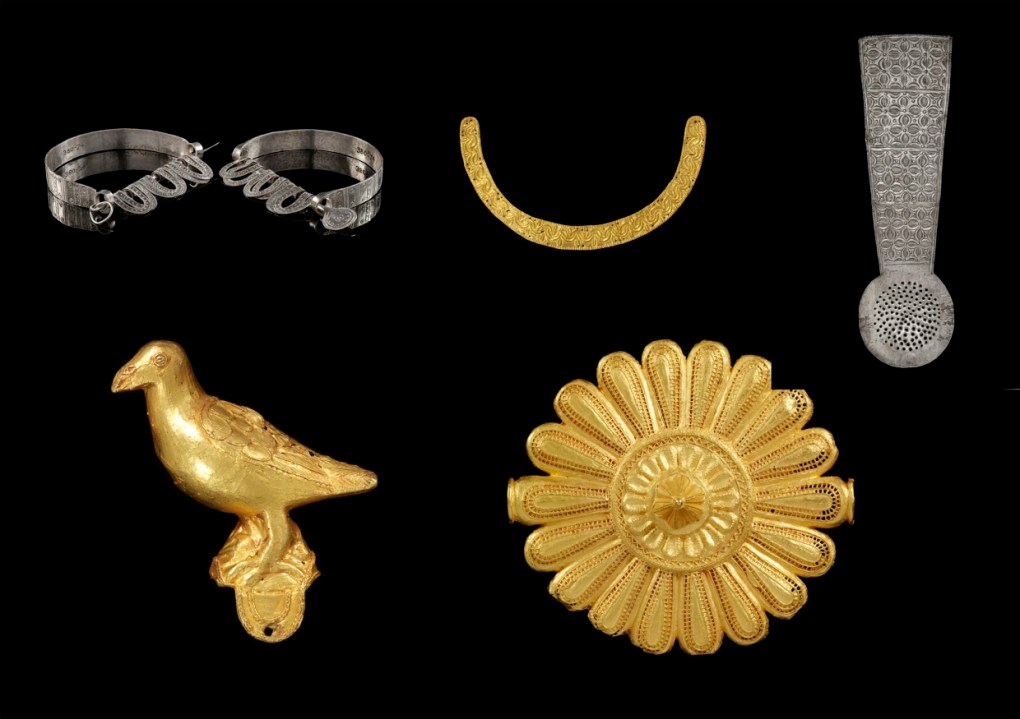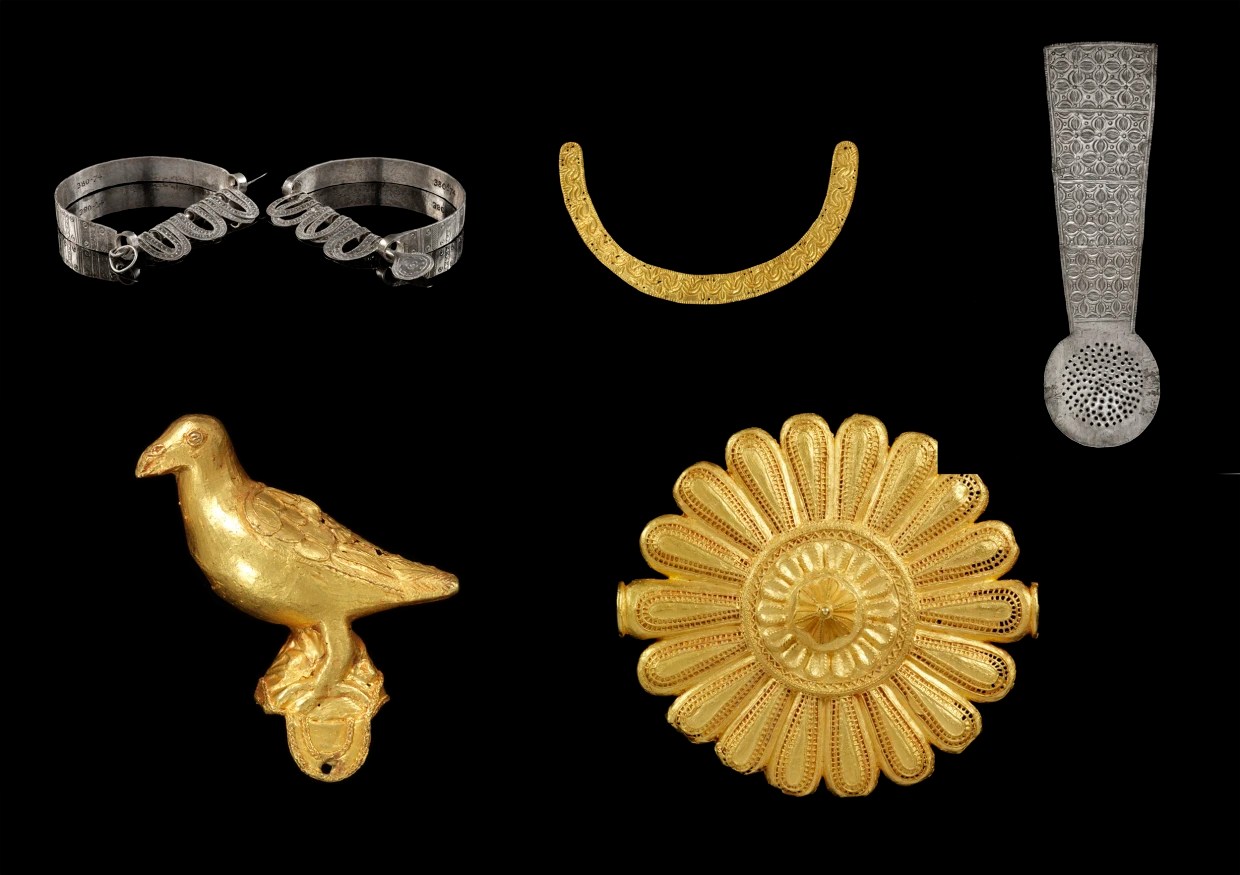I put the case in last week’s Spectator that museums in this country have been gripped by a sort of infectious madness. Since I wrote that article the number of cases of museumitis has piled up further, and there are worrying signs that the infection is spreading into Europe. It has been announced that 32 of the Ghanaian ‘Crown Jewels’ are to be sent from the British Museum and the Victoria and Albert Museum to Asantehene Otumfuo Osei Tutu II, the current king of the Asante, to be exhibited in the Manhyia Palace Museum in Kumasi. The idea is to put them on exhibition there for three years, after which they will be returned (as things stand). But the V&A has indicated that the loan may be renewable, with no end date. These are beautiful objects made, mainly in the nineteenth century, out of the famous gold of Ghana which first attracted Portuguese explorers to that part of West Africa in the late fifteenth century. They include a beautifully crafted bird, a golden peace pipe and a golden lyre.
No one seems to be denying that the loans are a trial run for a much bigger and more controversial loan that might very well also become permanent i.e. the Elgin Marbles. The intention is to evade the terms of the act of parliament that prevents the British Museum and some other major museums from alienating their property. It is quite possible that this not so little difficulty will be removed by law if a Labour government decides to give the Marbles to Greece. Part of the argument (which many of us dispute) for returning Elgin’s purchases is that the Turkish rulers of Greece had no moral or legal authority to sell them. But the way these African treasures arrived is much more complex. Some were obtained as compensation for a British raid on the Asante capital. Some of the objects seem to have found their way on to the antiques market and were obtained through sale or auction. Some were passed on by the last British colonial administrators of what was then known as the Gold Coast.
Before people jump to the conclusion that this case is very similar to that of the much-publicised Benin Bronzes, several distinctions must be made. The Bronzes were seized at the end of the nineteenth century following an attack on the Oba’s palace in what is now Nigeria, and were used in bloody rituals that according to contemporary reports included the sacrifice of large numbers of slaves (one British aim was to put to an end the slave trade in that region). In any case there are thousands of the Bronzes, enough to fill the store-rooms of any number of museums. But the golden lyre was a gift from the Asante ruler to a British diplomat. It is not totally idiotic to suggest that returning diplomatic gifts is a breach of protocol, even after two centuries.
The same reservations apply to the news that the Spanish Culture Minister, Ernest Urtasun, has invoked Spain’s ‘colonial framework’, and intends to launch a programme for the restitution of objects in the country’s museums. The Prado, surely Spain’s most spectacular museum, has already questioned its ‘ethnocentric vision’ in an exhibition with the troubling title ‘Return Journey: Art of the Americas in Spain’. High on the list of objects for return is certain to be the pre-Colombian Quimbaya Treasure preserved in the Museum of America in Madrid. It contains 122 gold and copper figures. Colombia is known to want these artefacts to be sent back, even though they were a gift to the Spanish royal family way back in the nineteenth century. Once again it seems entirely graceless to demand the restitution of freely-donated objects where the legal title of Spain is not in doubt. No one, though, cares very much about the route by which returned objects arrived. Archbishop Welby sent back to Nigeria two modern busts given to one of his less blinkered predecessors, Dr Runcie, which were nothing to do with the Benin Bronzes, as Lambeth palace had to admit. Frankly, that verges on rudeness. On the Antiques Roadshow Ronnie Archer-Morgan prompted the possessors of a magnificent cloak given by the Emperor of Ethiopia to their grandfather, the British governor of Somaliland, to say they would gladly send it back to Ethiopia. Well, if people don’t want such treasures I suppose they don’t deserve to have them.
So let’s all give back every present of any significance to a museum and show how little esteem we have for those who gratefully accepted these gifts, and in many cases passed them on to a museum rather than simply taking them to the auction house. Let’s make it as difficult as possible for people from across the world to see Asante gold, the Benin Bronzes or the Rosetta Stone. That means pulling down the shutters on large parts of the history of humanity, just when the valid argument is being presented that large parts of great continents such as Africa and South America have a long history that is well worth studying – and therefore worth seeing on display in the great world museums. It also means requiring the British Museum and the V&A to make rock-solid arrangements concerning the return to Britain of any and every object sent out of the United Kingdom for display. Otherwise the proposals from the British Museum and the V&A are what a colleague of mine used to call the thin end of the avalanche.








Comments